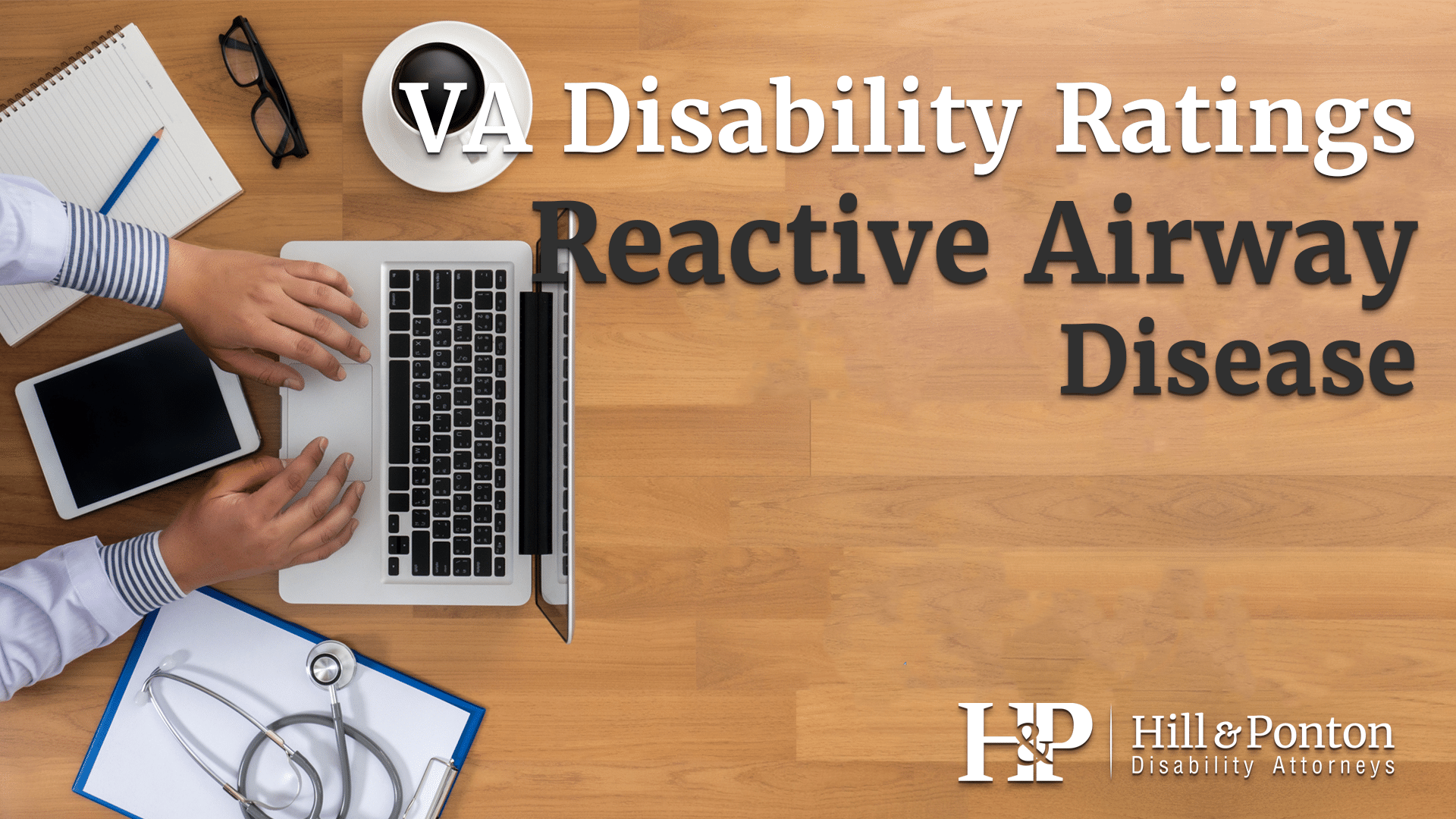Reactive airway disease (RAD) is a general term used to describe a group of respiratory conditions caused by exposure to various allergens or irritants. The most common type of RAD is asthma, which affects an estimated 22 million Americans. Veterans may be eligible for service-connected benefits for reactive airway diseases they can link to their service. In this guide, we’ll get into how VA rates RAD.
What is Reactive Airway disease?
Reactive Airway Disease (RAD) is a term coined decades ago to describe a group of lung diseases that can make it hard to breathe. RAD may be referring to respiratory conditions like asthma, bronchitis, and emphysema. This is commonly used when an exact diagnosis cannot be ascertained, but there is medical evidence of lung issues.
These conditions cause the airways in your lungs to become sensitive or over-reactive. This means that they react strongly when you are exposed to things like smoke, dust, or other airborne irritants. The reaction can cause the airways to swell and narrow, making it difficult to breathe. Some common symptoms of RAD include:
- Wheezing or a whistling sound when breathing
- Tightness in the chest with wheezing, coughing, or other difficulty breathing.
- Repeated episodes of bronchial spasms (a sudden constriction and relaxation of the muscles that line the airways) with choking sensation and high fever
- Chronic or severe coughing that produces large amounts of mucus
- Fatigue
- Inability to exercise or participate in physical activity
Suppose you are experiencing these symptoms and think you may have a reactive airway disease. In that case, it’s essential to see your doctor and have a medical opinion. Determining a RAD can be difficult to diagnose because the symptoms can be similar to other conditions.
If you have a reactive airway disease, you may be eligible for VA disability benefits. The severity of your symptoms will determine the level of benefits you receive.
Common Reactive Airway Disease types
There are several different reactive airway diseases, but the most common is asthma. Asthma is a chronic disease that affects the airways in your lungs. It makes it difficult to breathe and can cause wheezing coughing, and chest tightness.
- Bronchitis: a condition that causes the airways in your lungs to become inflamed and irritated. This can lead to a cough, chest congestion, and shortness of breath.
- Emphysema: a serious lung disease that damages the air sacs in your lungs. This makes it difficult to breathe and can cause coughing, wheezing, and chest tightness.
- Bronchiectasis: a severe lung infection that causes inflammation and damage to the airways. This can lead to a persistent cough, chest congestion, and shortness of breath.
- Croup: a common childhood illness that causes swelling and narrowing of the airways in the throat. This can lead to difficulty breathing, coughing, and
Service Connection Benefits for Reactive Airway Diseases
Suppose you are a Veteran and have been diagnosed with reactive airway disease. In that case, you may be eligible for disability benefits through the Department of Veterans Affairs (VA).
To receive service-connected benefits for your RAD, you must first show that you have the condition. This can be done with a diagnosis from your doctor or other medical evidence.
You will then need to show that your RAD is connected to your time in service. You can service connect your medical condition a few different ways, including:
- The medical evidence of reactive airway disease (RAD)
- An environmental hazard or injury event while in service
- Medical evidence that your RAD results from the hazard or injury event you were exposed to in service.
Once you have shown that your RAD is connected to your service, the VA will give you a disability rating. This rating is based on the severity of your symptoms and how they affect your ability to work.
C&P Exams for Reactive Airway Disease
To receive service-connected benefits for your RAD, you must first show that you have the condition. Disabled veterans can do this with a diagnosis from your doctor or other medical evidence.
The VA may also require you to have a Compensation and Pension (C&P) examination. This is an examination performed by a VA-approved doctor. The purpose of the exam is to gather more information about your condition and how it affects your everyday life.
During the exam, the doctor will ask you questions about your symptoms and how they have changed over time. They will also review your medical records and may order tests to help diagnose your condition.
Asthma-like conditions and Burn Pits
In Iraq, Afghanistan, Djibouti, and the Southwest Asian theater of war burn pits were utilized as waste disposal. Military personnel burned hazardous goods such as human and medical waste, ammunition, aluminum and plastics, and diesel fuel.
The technique successfully reduced huge amounts of trash but produced poisonous smoke plumes. It’s said that the largest Burn Pit was the size of ten football fields!
Asthma has been associated with burn pit exposure, indicating that It may cause reactive Airway Diseases. Burning dangerous materials and chemicals in open-air pits emits hazardous pollutants and carcinogens, some of which are pretty harmful.
VA Disability Rating for Reactive Airway Disease
VA uses diagnostic code 6602 for Reactive Airway Diseases. This code is borrowed from bronchial asthma since they are closely related. As we mentioned above, RADs are undiagnosed asthma-type issues. This code goes from 10% – 100% rating.
- 10% VA Rating: Your FEV-1 is between 71 and 80 percent of what is expected. OR Your FEV-1/FVC is between 71 and 80 percent. OR You need bronchodilator therapy sometimes.
- 30% VA Ratings: If your FEV-1 is between 56 and 70 percent of what is expected, or your FEV-1/FVC is between 56 and 70 percent, you will likely need bronchodilator therapy and inhalational anti-inflammatory medication.
- 60% VA Ratings: If your FEV-1 is between 40% and 55%, OR if your FEV-1/FVC is between 40% and 55%, OR if you require monthly visits to a doctor for needed care of exacerbations, OR if you have intermittent courses of systemic corticosteroids three times a year or more.
- 100% VA Ratings for Reactive Airway Disease: Your FEV-1 is less than 40% of what it should be. This means that you have trouble breathing and need help from medication or machines to breathe better. OR You have more than one attack per week where you can’t breathe on your own, or; you need to take oral or injected corticosteroids every day.
TDIU for Reactive Airway Disease
Suppose your reactive airway disease is caused or aggravated by your military service and keeps you out of work. In that case, you may be eligible for Total Disability based on Individual Unemployability. To qualify, you must have a VA rating of at least 60% and be unable to work because of your disability.
Denied a Respiratory Illness VA Claim?
Don’t give up if you’ve been denied benefits for reactive airway disease or a similar lung issue. We have years of experience fighting for the benefits our veterans deserve, and we’ve been very successful with these cases. Contact us today for a free case evaluation if you have an active rating decision you disagree with.




